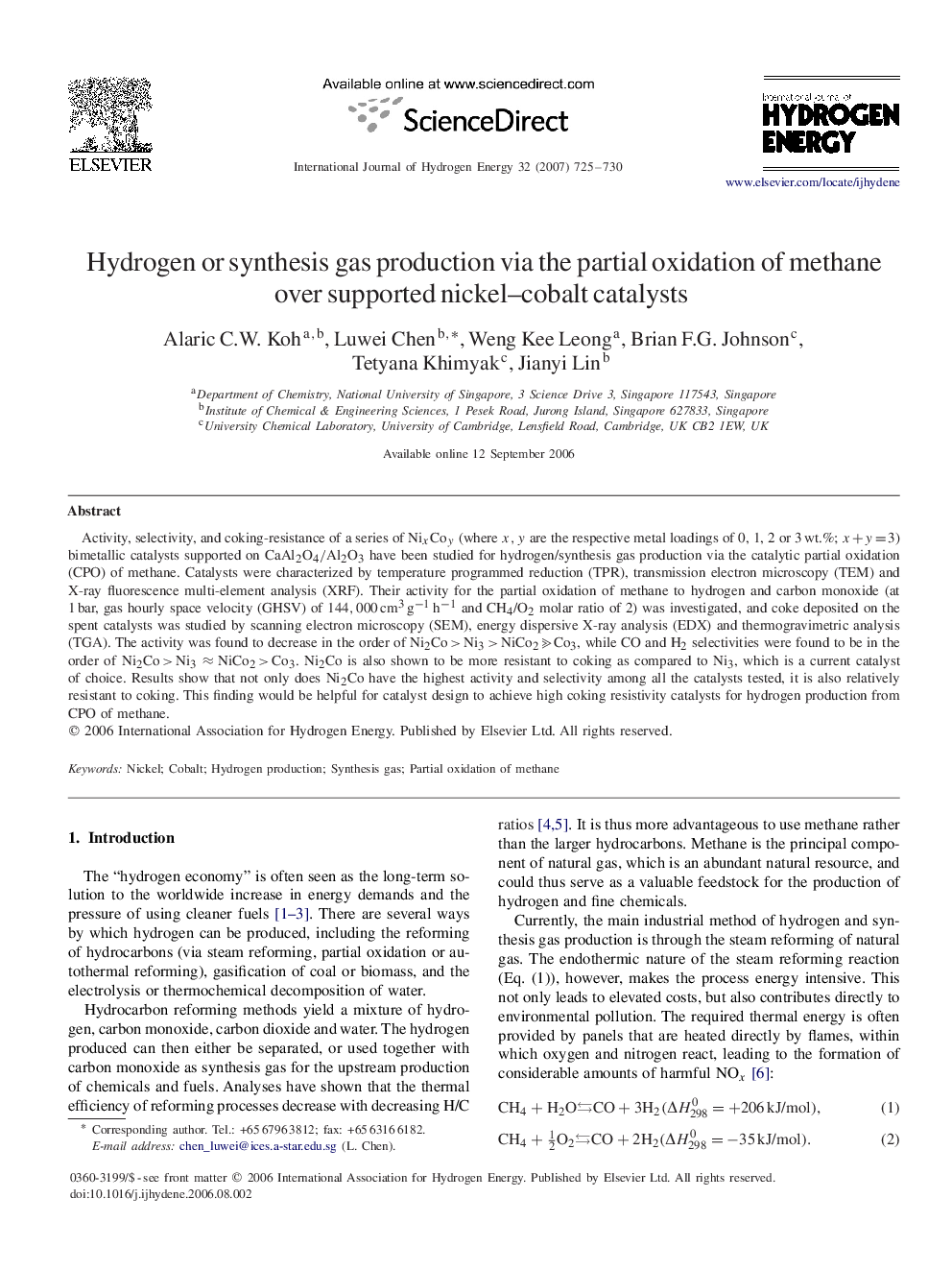| Article ID | Journal | Published Year | Pages | File Type |
|---|---|---|---|---|
| 1283872 | International Journal of Hydrogen Energy | 2007 | 6 Pages |
Activity, selectivity, and coking-resistance of a series of NixCoyNixCoy (where x,yx,y are the respective metal loadings of 0, 1, 2 or 3 wt.%; x+y=3x+y=3) bimetallic catalysts supported on CaAl2O4/Al2O3CaAl2O4/Al2O3 have been studied for hydrogen/synthesis gas production via the catalytic partial oxidation (CPO) of methane. Catalysts were characterized by temperature programmed reduction (TPR), transmission electron microscopy (TEM) and X-ray fluorescence multi-element analysis (XRF). Their activity for the partial oxidation of methane to hydrogen and carbon monoxide (at 1 bar, gas hourly space velocity (GHSV) of 144,000cm3g-1h-1 and CH4/O2 molar ratio of 2) was investigated, and coke deposited on the spent catalysts was studied by scanning electron microscopy (SEM), energy dispersive X-ray analysis (EDX) and thermogravimetric analysis (TGA). The activity was found to decrease in the order of Ni2Co>Ni3>NiCo2⪢Co3Ni2Co>Ni3>NiCo2⪢Co3, while CO and H2 selectivities were found to be in the order ofofNi2Co>Ni3≈NiCo2>Co3Ni2Co>Ni3≈NiCo2>Co3. Ni2Co is also shown to be more resistant to coking as compared to Ni3, which is a current catalyst of choice. Results show that not only does Ni2Co have the highest activity and selectivity among all the catalysts tested, it is also relatively resistant to coking. This finding would be helpful for catalyst design to achieve high coking resistivity catalysts for hydrogen production from CPO of methane.
